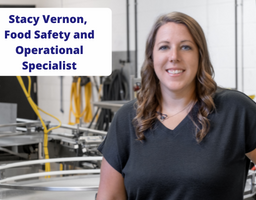As workforce challenges continue across all sectors of manufacturing, attention to food safety and quality standards cannot take a backseat. Food facilities who have dedicated the time and resources into achieving Global Food Safety Initiative (GFSI) certification, such as SQF or BRCGS, desire to maintain that certification year to year. In fact, many of their current customers require them to maintain certification to keep their business.
GFSI certification programs require policies, procedures and documentation to be maintained throughout the year. The scheme standards also continue to update with SQF implementing Edition 9 in May 2021 and BRCGS Issue 9 implementation planned for February 2023. Food Safety and Quality teams need to ensure they are staying up to date with their current programs as well as making the necessary changes to comply with the revised standards.
When a job opening sits vacant for an extended period of time or job roles change, it can be challenging to ensure all programs are being met. CIFT has successfully worked with company personnel who are either new to the company, promoted to the management role or veteran employees to assist with training and preparing them for either their first GFSI audit with the organization or their first audit under the new standards.
Stacy Vernon, Food Safety and Operations Specialist, has successfully helped different organizations, with products ranging from sauce and syrup, snack foods, ready to eat refrigerated foods, deli meats and many others to pass their GFSI audits with high rating scores.
Here are Stacy’s three steps for preparing her clients to pass their GFSI audits.
Preparing for GFSI Audits
- Gap Assessment
To start the process, Stacy conducts a gap assessment. This assessment shows where the facility stands against the standards to which they are being audited.
- Corrections
Next, using the findings from the gap assessment, corrective actions are taken to fill and complete the identified gaps.
- Documentation
Lastly, everything is documented and programs are organized. This step is key to help the audit process flow as smoothly as possible.
Throughout the process, any necessary training is also provided to help employees understand what to expect during their upcoming audit. Once the audit is completed, additional assistance is given to complete corrective actions with the auditing body.
“It was a great experience to work with Stacy Vernon. Her attention to details, skills and knowledge helped us to achieve our goal.”
– QA Manager of a Sauce and Syrup Manufacture, a previous CIFT GFSI client.










